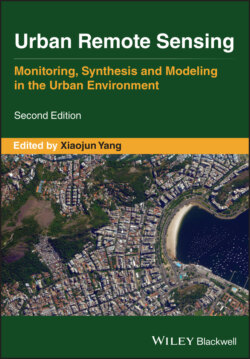Читать книгу Urban Remote Sensing - Группа авторов - Страница 60
3.4.2 BUILDING INSPECTION
ОглавлениеThe built environments we live in are constantly aging and wearing down. Regular checking of rooftops is critical to identify wet insulation issues at an early stage and prolong the lifespan of building roofs. Heat transfer and air loss through windows, cracks, chimneys are important causes of energy loss in residential buildings. Therefore, infrastructure inspection is necessary to maintain their energy efficiency and reduce further maintenance costs. UAS can capture thermal patterns with infrared cameras and generate 3D Computer‐aided Design (CAD) models, which can help to assess energy production and conservation of urban structures (Rakha and Gorodetsky, 2018). Some efforts have been made to advance UAS applications in building inspections. For example, Zhang et al. (2015) developed a relative thermographic calibration algorithm and automatic thermal anomaly detection methods. Besada et al. (2018) demonstrated an automated flight process achieved with a Mission Definition System for infrastructure inspections using UAS. However, there are still some issues concerning the UAS applications in building energy audits. For example, better GPS accuracy is needed. The accuracy of UAS and its ability to avoid obstacles relies heavily on the accuracy of the onboard GPS and Inertial Navigation System (INS) (Steffen and Förstner, 2008). There are no conclusive strategies for path planning or inspection distance optimization for the UAS‐based building audit, which points toward a new research direction (Rakha and Gorodetsky, 2018).
